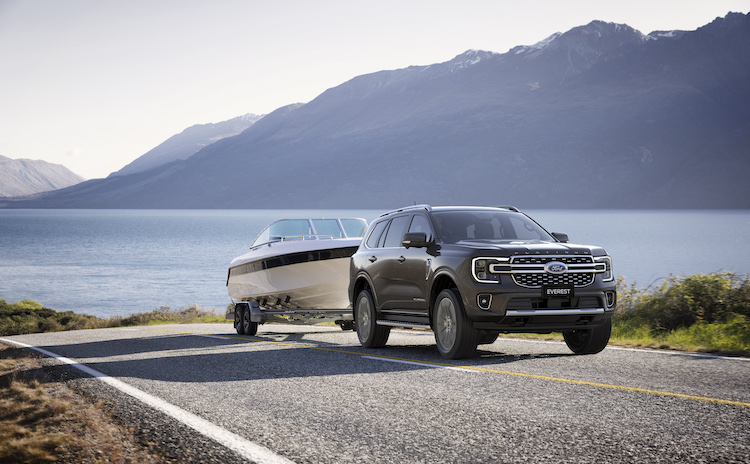
Ford has ticked another box in what’s shaping up to be a watershed year for its popular Ranger. Having unveiled the heavily revised Ranger late last year and the Ranger Raptor last month, it’s now unveiled the Ranger’s SUV sibling; the Everest.
The Everest unsurprisingly adopts a familiar wave of changes shared with the Ranger, a model that it shares platforms with.
Most obviously the new Ranger features similar, more ‘Americanised’ styling cues. Its front fascia is designed to pair neatly with the firm’s US offerings, with the Everest adopting a more mature bumper layout than the Ranger, and an all-new tailgate and taillight design.
Like with the Ranger, the Everest’s creation utilised numerous interviews the brand conducted with consumers all over the world. Everest chief platform engineer Ian Foston has coined the phrase ‘tough on the outside, sanctuary on the inside’.
The sanctuary aspect is qualified by the large SYNC 4A tablet centre touchscreen (10.1-inches in entry-level models, 12-inches in higher trims), the digital cluster behind the steering wheel, a lengthy list of standard safety tech, and the mature dash layout.
The safety tech list includes a series of new features. Among them, lane keep with road edge detection, evasive steer assist, reverse brake assist, a blind spot monitoring system that loops in your trailer, and an improved collision assist system.
Ford boasts that the model is much quieter inside than before, something that will be particularly beneficial for those who often make use of their third-row seating. The brand says the Everest’s cabin space took inspiration from modern home design, in its integration of ambient lighting and improved materials.
Two powertrains have been confirmed for the Everest, with Ford New Zealand announcing that both will be coming to New Zealand in mid-2022.
The model will come with either the familiar 2.0-litre biturbo diesel or a 3.0-litre turbodiesel V6. The brand has yet to confirm power or torque outputs for either engine option, although it’s likely that the 2.0 will produce a figure in the ballpark of the current model’s 157kW/500Nm. Both engines come paired to a 10-speed automatic.
Three trims have been announced for the local market; the Trend, the Sport, and the Platinum. A spiritual successor of sorts to the Titanium, the Platinum gets the larger touchscreen and engine, 21-inch wheels, a unique grille, heated and cooled front seats with electric adjustment, heated second-row seats, a panoramic roof, and more.
The Platinum isn’t the only model that will get the V6, with the Sport also coming equipped with the bigger engine. With Ford yet to lift the lid on the Ranger’s new hybrid variant (widely tipped to be a plug-in hybrid), expect an electrified Everest to be on the cards for the future.
“Our customers’ feedback on what they loved about the current Everest, and what they didn’t, has helped us create a truly remarkable vehicle – one that is very capable, safe, smart and powerful,” says Dianne Craig, president of Ford’s International Markets Group.
“But just as importantly, their feedback has helped us create a remarkable ownership experience as well. Everest customers lead busy lives, juggling work, family time, a social life and recreation. They need their vehicle ownership experience to be easier and more rewarding, so we’ve created a collection of services that, depending on market, are designed to help do just that.”








